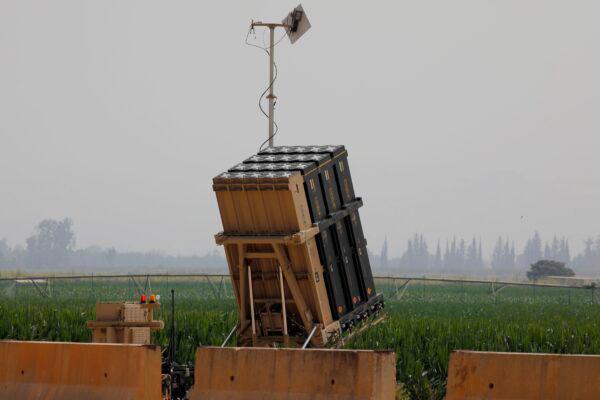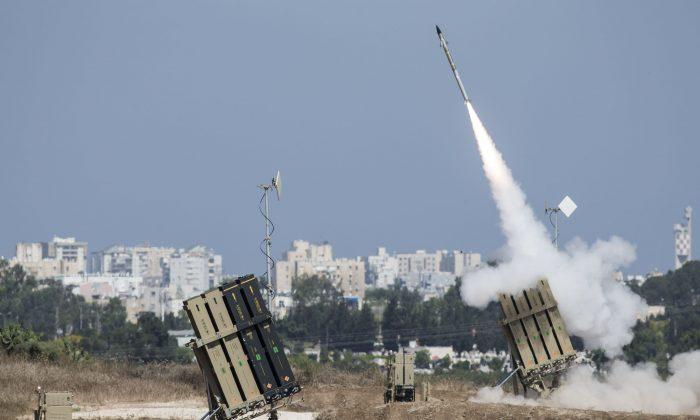A manufacturing base for the Iron Dome system that intercepts rockets fired from the Gaza Strip into Israel is to be set up in the United States.
The Army currently has two Iron Dome batteries that are being used as a stop-gap in lieu of a new defense system that will counter the growing threat of adversaries armed with longer-reaching missiles.
The joint manufacturers, Raytheon Missiles & Defense and RAFAEL, announced on Aug. 3 that they were setting up a manufacturing site in the United States, to be chosen by the end of the year.
Iron Dome missiles are able to intercept incoming cruise missiles, unmanned aerial systems, and short-range targets such as rockets, artillery, and mortars.
Raytheon says that Iron Dome is the world’s “most-used” intercept system, with more than 2,500 operational intercepts and a success rate of over 90 percent.
The United States’ adversaries, especially Russia, China, and Iran have built up growing arsenals of longer-reaching missiles.

Improved defense against incoming missiles is one of the Army’s six modernization priorities.
Congress mandated that the Army adopt the Iron Dome as an interim solution as it tries to develop a more comprehensive, ambitious system to protect troops and infrastructure on the future battlefield.
Like all interceptor systems, Iron Dome is more than a smart interceptor missile: it is a comprehensive system that includes radar tracking, threat identification, and targeting.
Parts of the Iron Dome may ultimately end up in that more comprehensive solution.
The Army has struggled to integrate Iron Dome into the electronic eyes, ears, and brain of its missile defense system, according to Gen. Mike Murray, the head of Army Futures Command, which is in charge of the service’s modernization efforts.
Murray told the House Armed Services Committee earlier this year the main reason is that the Israeli government has refused to provide critical source code.
“We believe we cannot integrate them into our air defense system based upon some interoperability challenges, some cyber [security] challenges, and some other challenges,” said Murray.” So what we ended up having is two stand-alone batteries that will be very capable, but they cannot be integrated.”





